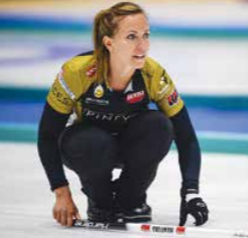
This year’s Scotties Tournament of Hearts and Tim Hortons Brier will be unlike any before them.
Curling is moving into a bubble in Calgary.
The two national championships will have the largest fields they have ever had, with 18 women’s and 18 men’s teams. It’s Curling Canada’s way to deal with COVID, and to be as inclusive as possible. It is a good plan.
Some curlers are using this unique season to discuss the future of the Brier and Scotties. It is an age-old discussion actually, but was brought to light through some good reporting by Ted Wyman of the Winnipeg Sun.
Some elite curlers feel the Brier and Scotties could be for “amateur” teams and the top dogs would play for a trip to the worlds through the Canada Cup or a similar event.
Curling Canada should nix that quickly. If teams don’t enter playdowns to go to the Brier or Scotties, tough luck. The Canadian champion, meaning the winners of the Brier and Scotties, should continue to go to the worlds.
I can’t imagine TSN going for this silliness. And crowd sizes and television dollars are important for Curling Canada to run events that have to be subsidized.
One of those in favour of changing the role of the Brier and Scotties is Matt Dunstone, who will skip our province’s team at the Brier.
He thinks a two-tiered system is needed. He suggests the top 15 teams in the country, as determined by the points system currently in use, and the Brier/Scotties champion be added to a 16- team national championship.
“I think the Brier and the Scotties are going through a serious identity crisis. We need to change something so we can also have a true national championship. We have too much talent across our country sitting on the sidelines during our national championships,” Dunstone told Wyman.
Identity crisis?
“I grew up with the goal of winning the Brier,” Dunstone said. “I love the Brier and I love the provincial representation involved in it, but it just doesn’t work with today’s game. The Brier and Scotties, as they are right now, are not true national championships.
“We need to provide good young teams with the opportunity to show their stuff and a lot of these teams can’t do that, based on where they are, geographically.”
How do you define a national championship?
For me, it’s the winner of the Brier and Scotties, and should remain so. Yes, it is tougher to qualify in provinces such as Alberta and Manitoba, for example.
“I’m trying to find ways to grow the sport and include everybody. I’m not trying to skew it in a way that’s great for my team or Kevin Koe’s team. I want it to be great for everyone in every province involved.”
There will be three wild-card teams at this year’s Brier. They are Mike McEwen, Kevin Koe and Glenn Howard, who is seemingly as old as the granite he throws. In normal circumstances, only one of them would have qualified.
Neither Howard nor McEwen seem capable of winning the Brier, but will be top 10 teams.
In fairness to Dunstone, the announcement of two extra wildcard teams came after Dunstone’s interview with Wyman.
Here’s where we are this year. Each province and territory will be represented. There will be a team from Northern Ontario. Last year’s Canadian champions, Kerri Einarson and Brad Gushue, will be there, and there will be the three wild-card teams.
With there being no provincial playdowns, we are sending his on the men’s side and Sherry Anderson on the women’s side. Anderson got the nod when last year’s rep, Robyn Silvernagle, made two changes to her lineup. One is fine, but two is one too many.
It may seem harsh, given her success last year, but the rules are the rules.
There can be no doubt that the addition of the wild cards will make the calibre of curling higher. These selections are based on the points system that Dunstone mentioned.
I could live with three wild cards being in the field every year. It seems to be a nice compromise between Dunstone’s idea, and keeping the Brier, and Scotties, as national championships.
With McEwen, Koe and Howard in the field, the top nine teams in the points standings will be at the Brier.
On the women’s side, Tracy Fleury, Mackenzie Zacharias and Beth Peterson will get the wild-card nods. Teams such as those skipped by Kelsey Rocque, Chelsea Carey and Silvernagle, as mentioned, are ineligible because of lineup changes.

(Wiki Photo)
Canada is a little thin on elite women’s teams, but Einarson, Rachel Homan and Jennifer Jones will be there. Five Manitoba teams are in the field — Einarson, Jones, Fleury, Zacharias and Peterson. That reenforces Dunstone’s point of view, but so be it.
No matter how it plays out, there will be at least 10 good teams in each field. The winner will be a good team, and a good representative for our country.
Dunstone is one of the teams with a shot at winning. I rank him sixth in the men’s field.
Winning the Brier or Scotties is special, as it always has been, and always should be. It is our national championship.
-Cam Hutchinson

Leave a Reply